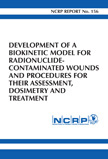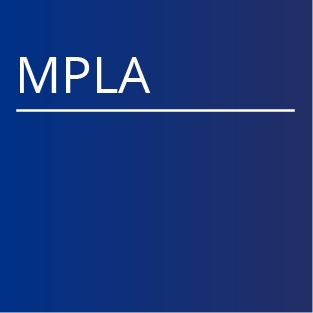AAPM has contracted with NCRP to provide each AAPM Member in good standing access and download privileges of electronically available NCRP reports, commentaries and statements. This report was prepared by the National Council on Radiation Protection and Measurements (NCRP). The Council strives to provide accurate, complete and useful information in its reports. However, neither the NCRP, the members of NCRP, other persons contributing to or assisting in the preparation of this report, nor any person acting on the behalf of any of these parties (a) makes any warranty or representation, express or implied, with respect to the accuracy, completeness or usefulness of the information contained in this report, or that the use of any information, method or process disclosed in this report may not infringe on privately owned rights; or (b) assumes any liability with respect to the use of, or for damages resulting from the use of, any information, method or process disclosed in this report.
 |
Report No. 156 - Development of a Biokinetic Model for Radionuclide-Contaminated Wounds for Their Assessment, Dosimetry and Treatment (2006) Price: $140 PDF (AAPM Members FREE) Category: Reports The scientific literature contains case reports on >2,100 wounds contaminated with radionuclides. The vast majority of these reported wounds have occurred in the proximal and distal phalanges of workers in facilities that process plutonium. Since 1990 the use of depleted uranium (DU) in military munitions has resulted in combat wounds with DU shrapnel. In addition to contaminated wounds arising in industrial and military situations, medical use of radioactive material as a radiographic contrast agent has resulted in the development of granulomas at injection sites, a type of foreign-body reaction complicated by the radiation delivered to the site. Although numerous biokinetic and dosimetric models for intakes of radionuclides by inhalation and ingestion have been published, a comparable consensus model for intake via contaminated wounds has not, even though the total amount of activity associated with a contaminated wound is typically much larger than that associated with worker exposures via inhalation or ingestion. Thus, in the mid-1990s NCRP in collaboration with the International Commission on Radiological Protection established a scientific committee tasked with developing such a wound model. NCRP Report No. 156 presents a comprehensive review and in some cases, reanalysis of animal data relating to the biokinetic behavior of radionuclides in wounds. The data have been used to derive the parameters of a comprehensive compartmental model for contaminated wounds, while the structure of the model itself is grounded in the biochemical and physiological response of the body to a wound. Information is also presented on the etiology of radionuclide-contaminated wounds, and the biological processes of wound healing, including foreign-body responses and carcinogenesis. Human data from occupational, military and medical exposures are provided to relate the animal data to human experience. Dose coefficients for local doses are presented, as is a summary of wound monitoring methodology. The development of systemic dose coefficients based on the wound model for all commonly encountered radionuclides is beyond the scope of this Report, but should be undertaken in the future. Finally, current procedures for the medical management of contaminated wounds are discussed. ISBN-13: 978-0-929600-93-2 View the latest Book Review of this Report. Scientific Committee: Bryce D. Breitenstein, Jr., Chairman Eric G. Daxon Patricia W. Durbin Ronald E. Goans Raymond A. Guilmette John J. Russell Richard E. Toohey Fletcher F. Hahn, Advisor Jean Piechowski, Advisor |



















